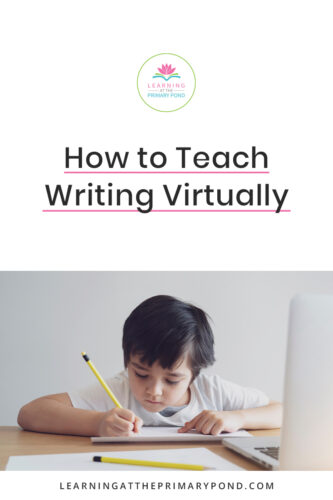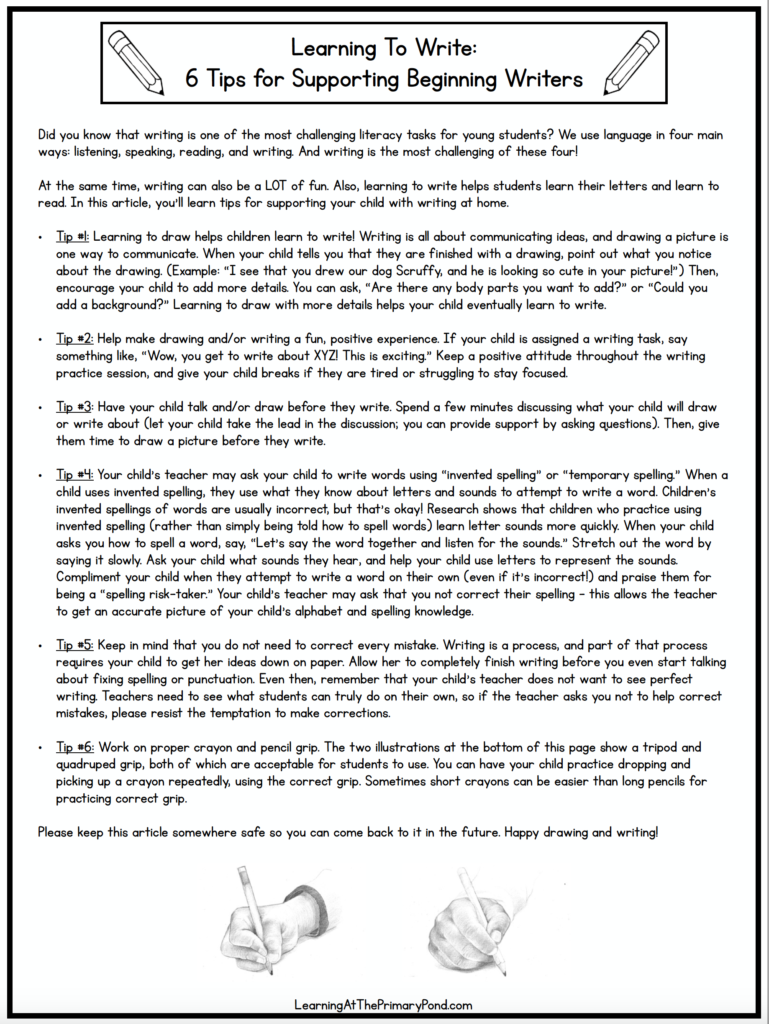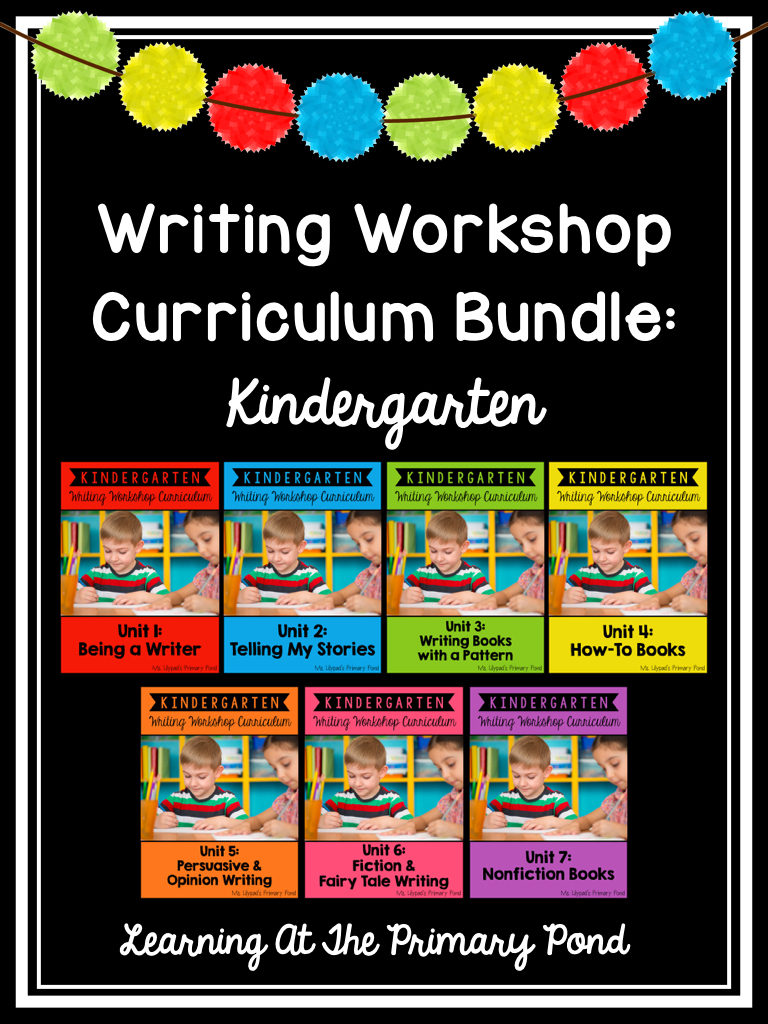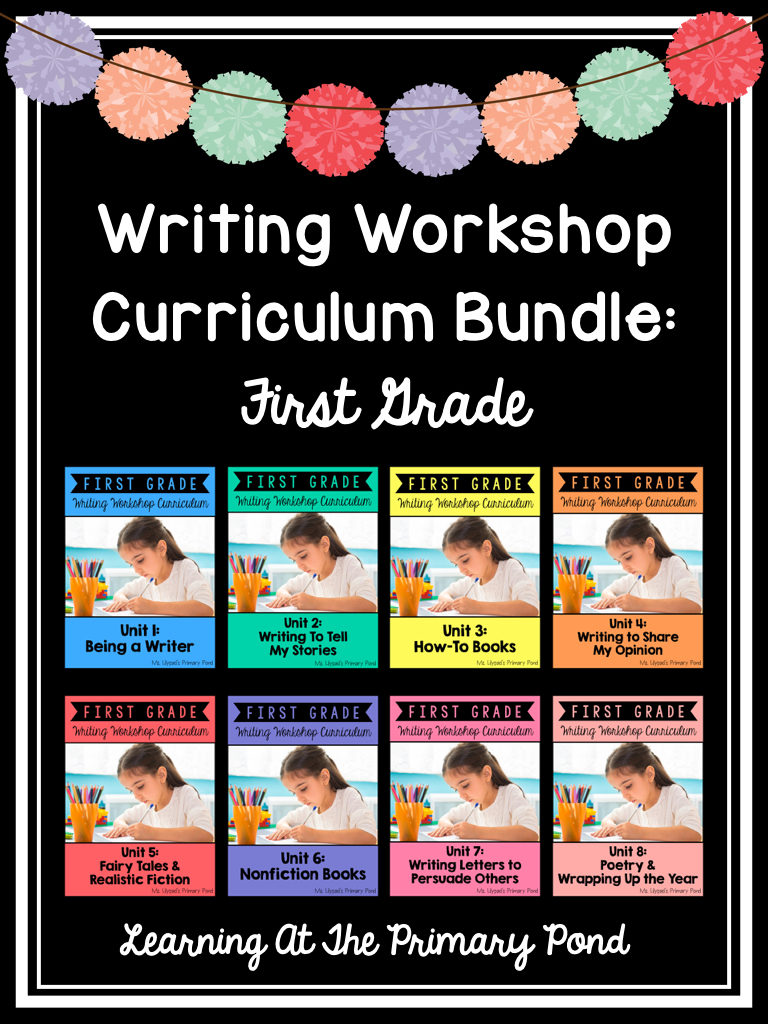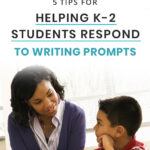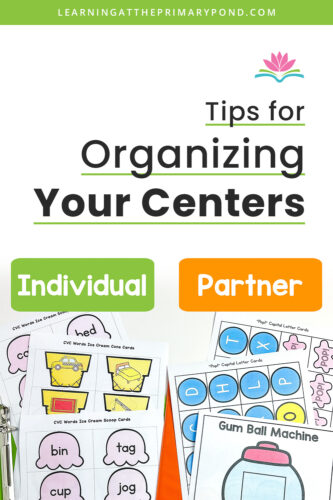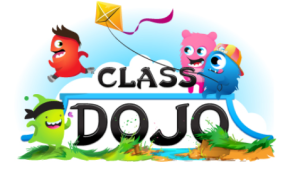Are you teaching writing online to your K-2 students?
Even in the classroom, writing is a very challenging task for many students. And it can be even more difficult when we’re not physically with our students to support them.
We also can’t give as much in-the-moment feedback (which is so important for young writers!).
So yeah, teaching writing online can be difficult. But it can also be fun and effective!
Keep reading to learn 5 helpful tips for teaching writing online to Kindergarten, 1st grade, and 2nd grade students! (There’s a freebie waiting for you, too!)

Tip #1: Keep it simple.
If you’re new to teaching online, writing instruction can feel challenging and overwhelming.
The best thing you can do for yourself and your students is to keep it simple!
Some of your favorite – but more complicated – writing projects may not work. That’s okay. You can still make writing fun for your students.
You may not be able to teach live writing lessons as often as you would in a “normal” classroom setting. Again, that’s okay. Do what you can, and make sure students have plenty of time to practice writing independently.
Focus on your “must teach” skills. Keep your lessons and assignments simple. You can do this!!
Tip #2: Incorporate lots of “show and tell.”
Modeling writing for students is always important. But it’s extra important if you’re teaching writing online!
Since you can’t give as much guidance to students during the actual writing process, students really need to watch you write and hear you think aloud. (Even if you think the writing task is relatively straightforward.)
You can model writing when teaching online by writing on chart paper behind you. Or you can place a regular-sized piece of paper under a document camera connected to your computer. You can do this during a live lesson or a recorded lesson. (Or if you’re doing a live lesson, record it so students can come back to it later!)
As you model, tell students what you’re doing and why you’re doing it. (Example: “Right here I’m going to list out all the materials needed to make a paper kite. That way, the reader will be able to gather materials before she begins following my steps for making the kite.”)
Tip #3: Actively involve students in live lessons as much as possible.
Teaching writing online just feels different than teaching a group of students in the classroom. It can be harder to keep students’ attention.
For this reason, we need to find ways to actively involve students in our writing lessons as much as possible. Here are a few ideas:
- When you’re modeling writing, have students repeat back the sentence that you’re currently writing or intend to write.
- Ask students to raise their hands when you need a period or capital letter.
- Ask, “Is this sentence finished?” and have students show thumbs’ up or thumbs’ down to indicate “yes” or “no.”
- Although some modeling requires students to simply watch and listen, see if you can have students “write along” with you at times. For example, you might say a sentence and model writing it, and students simultaneously write the sentence on their own individual whiteboards.
Keeping lessons brief (10 minutes for K-1, 10-15 minutes for 2nd) is also helpful in maintaining students’ attention.
Tip #4: Remember that you may be teaching the parents, too!
If you’re teaching writing online, students’ families may be much more involved in writing instruction than they would if you were teaching in-person.
This can be a great thing, because some caregivers are able to give one-on-one attention to their children.
But it can also be a challenge. Most parents weren’t trained in teaching primary students to write. Naturally, they may not know what is expected or how to support their students!
For example, it’s easy for parents to see spelling mistakes. They’ll probably want to help their child fix the mistakes.
But when students are first learning how to write and spell, we don’t need them to spend hours fixing every little spelling mistake. This can feel very discouraging – and squash their motivation for writing.
For this reason, we need to help parents understand what to expect, too. We need to show them examples whenever possible.
We also need to explain that we, as their teachers, need to see students’ real writing (and not just a version that has been corrected by their caregivers).
We can also share that having students use invented spelling is actually great for their phonics development!
If you could use some help explaining writing instruction to the families of your Kindergarten, 1st grade, or 2nd grade students, please download this freebie. (Note that there are 2 separate letters – the first letter is best for late Pre-K and Kindergarten; the second letter is best for 1st & 2nd grade.)
Tip #5: Find creative ways for students to share their writing.
In a regular classroom setting, my students get to share their writing with a partner every single day. They LOVE the opportunity to share, and having a real audience is motivating to them.
When we’re teaching writing online, we still need to find ways for students to share their writing with their classmates!
Here are a few options:
- Meet with a small group of students on a video call, and have them take turns sharing their work.
- Use an app like Seesaw and have students upload a photo of their work to a folder where their classmates can see it.
- Create a folder on Google Drive and have students upload a photo of their work to the folder. Students can explore it on their own, and you might even pick a few pieces to highlight during your next writing lesson.
When you’re teaching writing online, sharing time takes a little more work. But it’s SO worth it – it’s incredibly fun and motivating for students.
Writing Resources
If you’re looking for writing lessons that can be taught at school or online, check out my writing bundles for Kindergarten, 1st grade, and 2nd grade:
(Note that these were designed for traditional classroom instruction, but many teachers are successfully using them to teach online.)
Happy teaching!
